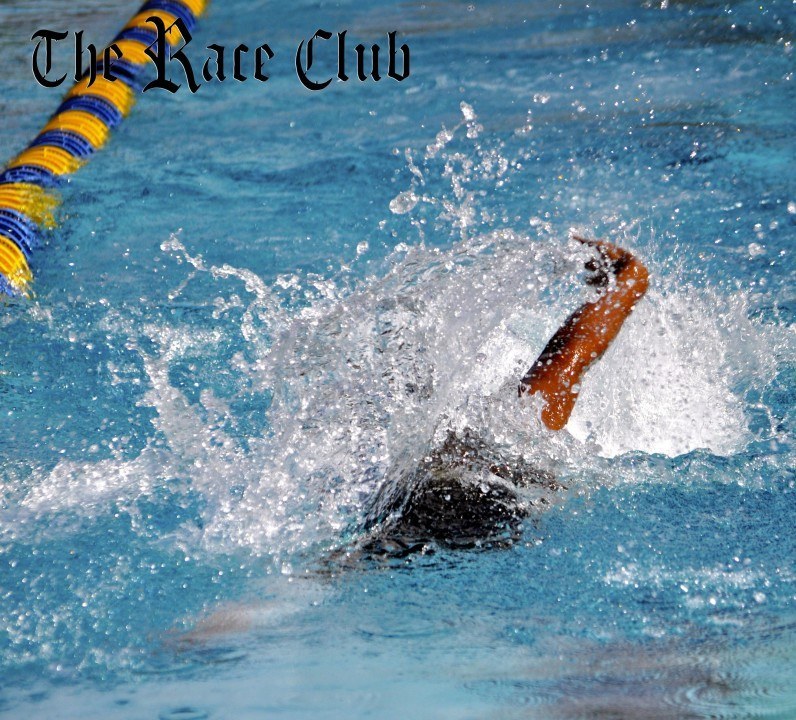Courtesy of Gary Hall Sr., 10-time World Record Holder, 3-time Olympian, 1976 Olympic Games US Flagbearer and The Race Club co-founder.
The definition of inertia is the following:
…a body in motion wants to remain in motion, while a body at rest wants to remain at rest.
It was first described by Galileo and later incorporated into the first of Newton’s three laws of motions. What does the law of inertia have to do with swimming? Lots.
Another way of looking at inertia is that it is far more efficient to keep a body moving at the same speed than it is to start it and stop it, or even slow it down, repeatedly. Because of inertia, we get better gas mileage on the freeway driving a constant speed of 70 mph than in town, averaging 35 mph, with lots of starts and stops.
As coaches, I think we often get hung up on the word ‘efficiency’. Efficiency is defined as the number of calories we burn to travel a certain distance in the water; in other words, it is our ‘gas mileage’ in the water. While that is important, efficiency per se does not win races. No one asks the winner of the Indianapolis 500 how the gas mileage was during the race. They don’t care. They just know that he or she got the checkered flag. The same goes with swimming. In order to swim fast and win races, we have to burn lots of calories. We simply cannot afford to waste them on unproductive motion.
In the sport of swimming, two of the four strokes conform more to the law of inertia than the other two. I call freestyle and backstroke the ‘freeway strokes’ and butterfly and breaststroke the ‘stop and go strokes’. It is partly due to inertia that the latter are either more difficult or slower than the former. Nonetheless, the law of inertia applies to all four strokes, as well as to starts and turns.
Freestyle and Backstroke Conform More To The Law of Inertia
The reason that freestyle and backstroke conform more to the law of inertia than breast or fly is that there are more propulsive efforts occurring during each stroke cycle, particularly with a six-beat kick. In other words, there is less propulsive ‘down time’. The amount of propulsive ‘down time’ is important because as long as we are moving forward, frontal drag has no ‘down time’. That is, with our non-streamlined shape, frontal drag is working to slow us down at all times and quickly. Therefore, the only way we can keep a constant speed is by maintaining constant propulsion, which doesn’t happen with any stroke.
There are three ways to get on the freeway and maintain speed while swimming freestyle and backstroke; six beat kick, increased stroke rate and reducing frontal drag. At The Race Club, we focus on the importance of inertia and how each individual can conform to the universe’s laws that rule us in the pool.
Yours in swimming,
Gary Sr.

Gary Hall, Sr., Technical Director and Head Coach of The Race Club (courtesy of TRC)
Like The Race Club on Facebook
Follow The Race Club on Instagram
Follow The Race Club on Twitter
Connect to The Race Club / Gary Hall Sr. on Linkedin
THE RACE CLUB
Because Life is Worth Swimming, our mission is to promote swimming through sport, lifelong enjoyment, and good health benefits. Our objective is for each member of and each participant in The Race Club to improve his or her swimming performances, health, and self-esteem through our educational programs, services and creativity. We strive to help each member of The Race Club overcome challenges and reach his or her individual life goals.
 The Race Club provides facilities, coaching, training, technical instruction, video, fitness and health programs for swimmers of all ages and abilities. Race Club swim camps are designed and tailored to satisfy each swimmer’s needs, whether one is trying to reach the Olympic Games or simply improve one’s fitness. Our programs are suitable for beginner swimmers, pleasure swimmers, fitness swimmers, USA swimming or YMCA swimmers, or triathletes; anyone who wants to improve swimming skills. All of our Race Club members share an enjoyment of being in the water and use swimming to stimulate a more active mind and body.
The Race Club provides facilities, coaching, training, technical instruction, video, fitness and health programs for swimmers of all ages and abilities. Race Club swim camps are designed and tailored to satisfy each swimmer’s needs, whether one is trying to reach the Olympic Games or simply improve one’s fitness. Our programs are suitable for beginner swimmers, pleasure swimmers, fitness swimmers, USA swimming or YMCA swimmers, or triathletes; anyone who wants to improve swimming skills. All of our Race Club members share an enjoyment of being in the water and use swimming to stimulate a more active mind and body.
